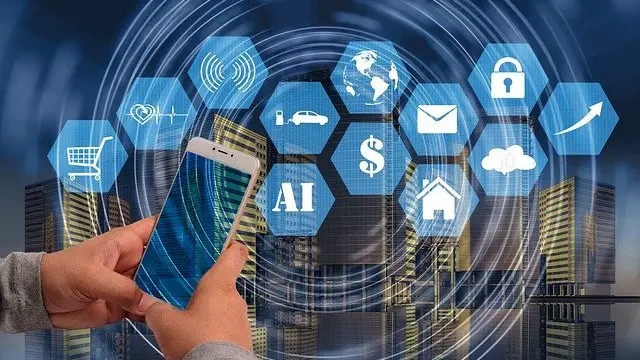Challenges of Sustaining Technology: Navigating the Path to Long-Term Success:
which of the following is a challenge of sustaining technology ?
In the fast-paced realm of technology, where innovations emerge at a rapid pace, one might assume that all technological advancements are geared towards disruption and breakthroughs. However, there exists another category of technology known as “sustaining technology.” While these innovations may not garner the same level of attention as their disruptive counterparts, they play a vital role in maintaining and improving existing products and services. In this article, we delve into the challenges associated with sustaining technology and explore how businesses can navigate these hurdles to achieve long-term success.
Introduction
In the ever-evolving landscape of technology, the spotlight often shines on disruptive innovations that transform industries and redefine the way we live and work. However, nestled within this dynamic environment lies the realm of sustaining technology, which focuses on improving and maintaining existing products and processes. While it might not capture headlines, sustaining technology presents its own set of challenges that businesses must overcome to stay competitive and relevant.
Defining Sustaining Technology
Sustaining technology encompasses incremental improvements and refinements made to existing products, services, or processes. Unlike disruptive technology, which introduces radical changes, sustaining technology aims to enhance user experience, increase efficiency, and prolong the lifespan of current offerings.
Importance of Sustaining Technology
Sustaining technology plays a pivotal role in supporting businesses’ ongoing success. It allows companies to refine their offerings based on customer feedback, technological advancements, and changing market trends. By continuously improving their products, businesses can maintain customer loyalty and create a competitive edge.
Challenge 1: Market Saturation
One of the significant challenges of sustaining technology is the potential for market saturation. As more competitors enter the market and offer similar products, differentiation becomes difficult. Companies must find ways to stand out and offer unique value to their customers.
Challenge 2: Limited Innovation
While sustaining technology focuses on gradual improvements, there’s a risk of stagnation in terms of innovation. Companies may become too comfortable with minor enhancements, neglecting the need for more significant breakthroughs that could reshape their industry.
Challenge 3: Customer Expectations
Customers today expect continuous updates and improvements to the products and services they use. Meeting these expectations while balancing other business priorities can be challenging, particularly when resources are finite.
Challenge 4: Resource Allocation
Deciding how to allocate resources between sustaining technology and pursuing disruptive innovations can be a delicate balancing act. Businesses need to ensure they invest enough in maintaining existing offerings without stifling opportunities for groundbreaking advancements.
Challenge 5: Technological Obsolescence
In the rapidly evolving tech landscape, the risk of technological obsolescence looms large. As new technologies emerge, older products and services can quickly become outdated, posing a challenge for companies relying heavily on sustaining their existing offerings.
Navigating Sustaining Technology Challenges
To overcome the challenges posed by sustaining technology, businesses can adopt several strategies. First, maintaining a customer-centric approach helps in understanding evolving needs and expectations. Second, fostering a culture of innovation encourages employees to identify areas for improvement proactively.
Strategies for Success
- Continuous R&D Investment: Allocate a portion of resources to ongoing research and development, ensuring that incremental improvements are part of the business’s DNA.
- Adaptive Marketing: Tailor marketing efforts to highlight the value of sustained innovations, showcasing how they directly address customer pain points.
- Collaborative Partnerships: Collaborate with suppliers, customers, and industry peers to gain fresh insights and perspectives on how to improve existing offerings.
Conclusion
Sustaining technology might not grab headlines like disruptive innovations do, but its impact on businesses is undeniable. Navigating the challenges it presents requires a careful balance between maintaining the status quo and pursuing the path to continued growth. By understanding and addressing these challenges head-on, businesses can ensure that their existing products and services remain relevant and valuable in an ever-changing world.

FAQs
Q1: What is the primary goal of sustaining technology?
The primary goal of sustaining technology is to make incremental improvements and refinements to existing products, services, or processes.
Q2: How does market saturation affect businesses relying on sustaining technology?
Market saturation can make it challenging for businesses to differentiate themselves from competitors and provide unique value to customers.
Q3: What is the role of sustaining technology in customer retention?
Sustaining technology helps maintain customer loyalty by continually enhancing products based on customer feedback and changing market trends.
Q4: How can companies balance resource allocation between sustaining technology and disruptive innovation?
Companies can strike a balance by allocating resources to ongoing research and development while still pursuing groundbreaking advancements.
Q5: Why is a culture of innovation crucial for overcoming sustaining technology challenges?
A culture of innovation encourages employees to identify areas for improvement and helps businesses stay proactive in addressing sustaining technology challenges.
Navigating Sustaining Technology Challenges (Continued)
Strategies for Success (Continued)
- Feedback Loop Enhancement: Establish a robust feedback loop with customers to gather insights, suggestions, and pain points, which can guide the direction of sustaining technology efforts.
- Agile Iteration: Adopt an agile approach to development, allowing for frequent iterations and adjustments based on real-time data and user feedback.
- Employee Empowerment: Empower employees at all levels to contribute ideas and solutions for sustaining technology, fostering a sense of ownership and innovation.
Conclusion
In the ever-evolving tech landscape, sustaining technology serves as the anchor that ensures products and services continue to meet customer needs and industry standards. While not as flashy as disruptive innovations, the steady progress and improvements provided by sustaining technology are essential for business longevity. By recognizing and addressing challenges like market saturation, limited innovation, and resource allocation, companies can harness the power of sustaining technology to remain competitive and relevant.

Hey there, tech enthusiasts! I’m your go-to content writer, delving into the fascinating world of technology hacks. Get ready to unlock mind-blowing secrets and discover innovative solutions through my engaging and insightful blogs.
